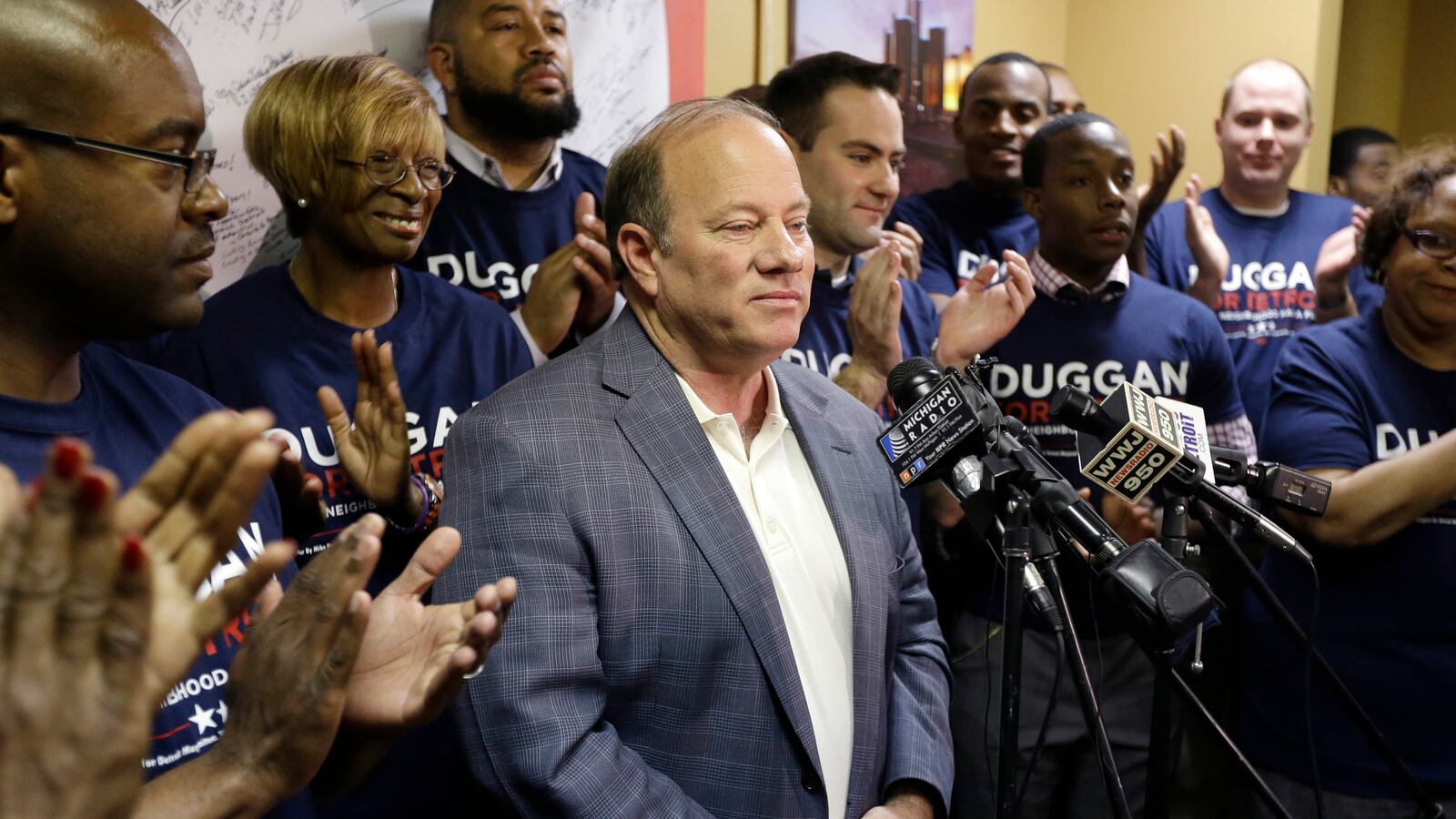DETROIT—The nation’s most dangerous neighborhood, by one measure, is a sleepy piece of real estate on a fall Saturday afternoon.
A lady of around 60 is getting out of her almost-as-old Buick in front of the Obedient Missionary Baptist Church, near Chicago Street and Livernois Avenue. The fire station, LE 2142, is quiet. Someone has poked holes in the side of the William Ruthrauff School, built in the early 1920s, its tall windows busted out long ago. Poorly executed black, blue, and white graffiti decorates most of the building.

Four miles away, Mike Duggan is acting like the next mayor of Detroit, which he may be. The former Wayne County prosecutor and mayoral candidate has a sizable poll lead over his political foe, Wayne County Sheriff Benny Napoleon, just days before Tuesday’s election.
Duggan—who, if elected, would be the city’s first white mayor since 1973—is at his childhood home in another not-so-great part of the city. He lived in the red brick three-bedroom house for four years, until he was six in 1963, and the family moved to nearby Livonia, a large suburb northwest of the city.
The old house is in a bad spot now, a neighborhood that’s no different than the most dangerous area at Chicago and Livernois. That’s the rub with Detroit—everyone is sure it’s the scariest place in the U.S. until they get there and realize it’s like any other urban center in the country.
At his former home, Duggan laments the Detroit decay a bit, then breaks into campaign promise mode: "We're going to come through neighborhoods like this and take the abandoned homes and we're going to move families in. You can go up and down this area and you see these beautiful brick homes that have been abandoned, you can get people to move in and fix them up.”
And you fix the cops to get the response time down from an hour. And you fix the 40 percent of the city’s 88,000 streetlights that don’t work. And you…
But first, you try to wrest the destiny of the city’s 700,000 residents back from the oversight of emergency financial manager Kevyn Orr, who came on board in March by fiat of Gov. Rick Snyder.
Duggan, if elected, has vowed to shorten Orr’s control over the finances of Detroit, claiming his very election should be a signal to the governor of better days ahead. And that he can do a better job of taking the city out the bankruptcy the city filed in July.
The fact that Duggan is white is a signal of other, more national implications. The last time Detroit’s mayor was Caucasian was 1973 and his name was Roman Gribbs, a former Wayne County Sheriff. It was also the last time the city’s population had a white majority by a 55 to 44 percent margin.
“Identity politics is dying,” said Eric Foster, a campaign consultant in Detroit. “The ‘us versus them’ needle is moving. You look at majority populations electing minorities, like President Obama, like [Gov.] Bobby Jindal in Louisiana, [U.S. Sen.] Cory Booker in New Jersey. Voters are evolving from gender and race to needs-based voting. ‘How does this candidate best help me meet my needs?’”
Duggan is primed to lead a new Detroit. He’s a former CEO, businessman and political lackey for a previous county administration all rolled into a pudgy, youthful looking 55-year-old.
Duggan is also the favorite candidate in the city’s youthful areas and the upscale neighborhoods, where coffee shops, drinking joints, markets, and retail outlets are popping up.
It’s Brooklyn Midwest in some parts, and these denizens are among the Duggan supporters.
“There is this new contingent in Midtown now and in the surrounding neighborhoods, said Stirling Gallup, 61, an independent stock trader who lives in Detroit’s upscale Indian Village neighborhood. “People with money are coming in and they aren’t natives and they can get good jobs and live cheap. There is no other city in the U.S. that is this cheap to live in. Detroit is not a joke any more.”
Which bodes well for Duggan, Gallup added.
“The newer people are going to vote for Duggan, he’s kind of the new breed. Napoleon gets the very traditional, old school voters.”
Considering this emerging Detroit, it’s no surprise that in that Chicago/Livernois neighborhood—supposedly the most dangerous in the U.S.—there is one signal of the mayoral election. On a small patch of grass, a blue yard sign slants backwards, stuck into the ground: “Benny for Mayor.”





